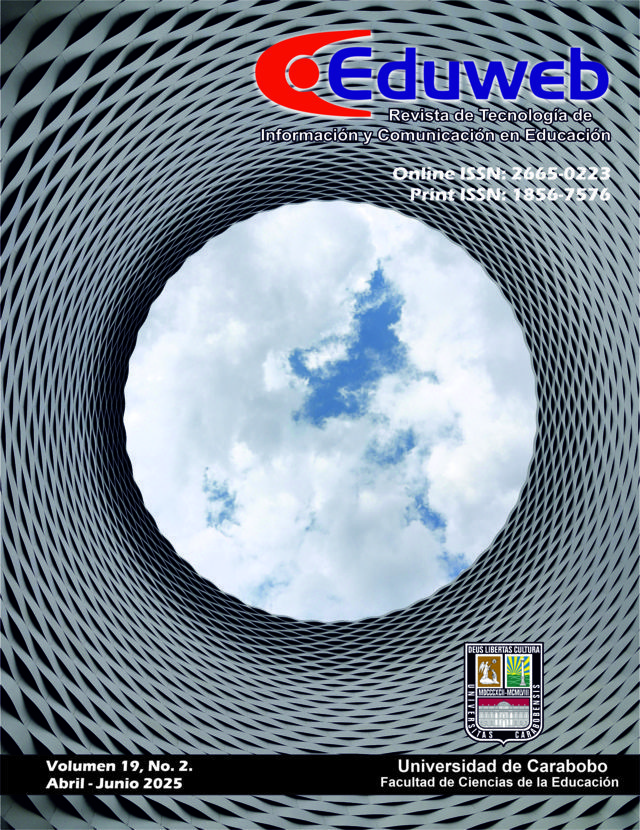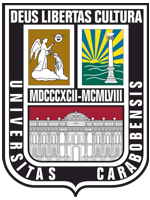Cybersecurity on Ukrainian Higher Education: Threats and protection measures
DOI:
https://doi.org/10.46502/issn.1856-7576/2025.19.02.3Keywords:
Cyber hygiene, intellectual property protection, national strategy, technology, privacy policyAbstract
The purpose of the study is to analyse the impact of cybersecurity on higher education in Ukraine, identify key threats and formulate key recommendations for improving the security of educational institutions. For this purpose, a cross-sectional survey study has been chosen. A purposive sample has been used to include participants. 79 questionnaires have been received; five have been rejected, and three more have refused to consent to data processing. The study involved 71 people, including 15 administrative staff (IT departments, managers), 30 teachers, and 26 students. The primary tool in the study has been a cross-sectional questionnaire survey conducted in the same period for all participants from 11/20/2024 - 12/20/2024. The results indicate that the main cybersecurity threats in Ukrainian educational institutions are viruses and malware (39,4%), hacking of university platform accounts (26,8%), phishing attacks (14,1%), and personal data leakage (12,7%). The results also have showed that 49,3% of respondents are moderately aware of cybersecurity measures at the university, while 28,2% are poorly aware. The conclusions summarise that to ensure cybersecurity further, it is necessary to expand multi-level protection systems, control the use of the Internet, and conduct additional training for students and teachers in cybersecurity.
References
AlDaajeh, S., Saleous, H., Alrabaee, S., Barka, E., Breitinger, F., & Raymond Choo, K.-K. (2022). The Role of National Cybersecurity Strategies on the Improvement of Cybersecurity Education. Computers & Security, 119, 102754. https://doi.org/10.1016/j.cose.2022.102754
Bannikov, V., Zalialetdzinau, K., Siasiev, A., Ivanenko, R., Saveliev, D., (2022). Computer Science Trends and Innovations in Computer Engineering against the Backdrop of Russian Armed Aggression. IJCSNS International Journal of Computer Science and Network Security, 22(9), 465-470. http://ijcsns.org/07_book/html/202209/202209060.html
Bingham, C. (2024). Education and Artificial Intelligence at the Scene of Writing: A Derridean Consideration. Futurity Philosophy, 3(4), 34–46. https://doi.org/10.57125/fp.2024.12.30.03
Blažič, B. J. (2021). Changing the landscape of cybersecurity education in the EU: Will the new approach produce the required cybersecurity skills? Education and Information Technologies, 27, 3011-3036. https://doi.org/10.1007/s10639-021-10704-y
Bobro, N., Bielikov, V., Matveyeva, M., Salamakha, A., & Kharchun, V. (2024). Advancing Public Administration: Enforcing Strategic Methods and Utilising Tools. Archives des Sciences, 74(3), 201–206. https://doi.org/10.62227/as/74332
Bohomaz, O., Koreneva, I., Lihus, V., Kambalova, Y., Shevchuk, V., & Tolchieva, H. (2023). Sobre o desenvolvimento do potencial educacional e científico no século XXI. Conhecimento & Diversidade, 15(38), 479–495. https://doi.org/10.18316/rcd.v15i38.11100
Buriachok, V., Korshun, N., Zhyltsov, O., Sokolov, V., & Skladannyi, P. (2023). Implementation of Active Cybersecurity Education in Ukrainian Higher School. In Information Technology for Education, Science, and Technics, Lecture Notes on Data Engineering and Communications Technologies, 178, 533–551. Springer Nature Switzerland. https://doi.org/10.1007/978-3-031-35467-0_32
Cabaj, K., Domingos, D., Kotulski, Z., & Respício, A. (2018). Cybersecurity education: Evolution of the discipline and analysis of master programs. Computers & Security, 75, 24–35. https://doi.org/10.1016/j.cose.2018.01.015
Catota, F. E., Morgan, M. G., & Sicker, D. C. (2019). Cybersecurity education in a developing nation: the Ecuadorian environment. Journal of Cybersecurity, 5(1), tyz001. https://doi.org/10.1093/cybsec/tyz001
Cheng, E. C. K., & Wang, T. (2022). Institutional Strategies for Cybersecurity in Higher Education Institutions. Information, 13(4), 192. https://doi.org/10.3390/info13040192
Crick, T., Davenport, J. H., Irons, A., & Prickett, T. (2019). A UK Case Study on Cybersecurity Education and Accreditation. In 2019 IEEE Frontiers in Education Conference (FIE). IEEE. https://doi.org/10.1109/fie43999.2019.9028407
Dei, H., Shvets, D., Lytvyn, N., Sytnichenko, O., & Kobus, O. (2024). Legal Challenges and Perspectives of Cybersecurity in the System of State Governance of Educational Institutions in Ukraine. Journal of Cyber Security and Mobility, 13(5), 963–982. https://doi.org/10.13052/jcsm2245-1439.1357
Devadze, A., & Gechbaia, B. (2024). Using Virtual Reality in the Educational Process to Increase Students' Motivation and Interest. E-Learning Innovations Journal, 2(2), 21–35. https://doi.org/10.57125/elij.2024.09.25.02
Galushchenko, O., Pidbereznykh, I., Piroh, O., Khrapach, D., & Tolmachov, O. (2024). Cybersecurity and geopolitical dimensions of external information interventions in Ukraine: Analysis of current trends. Data and Metadata, 3, 345. https://doi.org/10.56294/dm2024.345
Guchua, A., & Zedelashvili, T. (2023). Challenges arising from cyber security in modern global security (on the example of the Russia-Ukraine war). Eastern Review, 11(2), 79–88. https://doi.org/10.18778/1427-9657.11.18
Guo, Y.-C. (2023). Development Opportunities, Challenges, and Strategies for Cybersecurity Insurance in the Digital Economy Era. Global Economic Perspectives, 1(3), 11-15. https://doi.org/10.37155/2972-4813-0103-3
Haque, M. A., Ahmad, S., John, A., Mishra, K., Mishra, B. K., Kumar, K., & Nazeer, J. (2023). Cybersecurity in Universities: An Evaluation Model. SN Computer Science, 4, 569. https://doi.org/10.1007/s42979-023-01984-x
Horlynskyi, V., & Horlynskyi, B. (2019). Cybersecurity as a component of information security of Ukraine. Collection "Information technology and security", 7(2), 136–148. https://doi.org/10.20535/2411-1031.2019.7.2.190559
Khan, M. A., Merabet, A., Alkaabi, S., & Sayed, H. E. (2022). Game-based learning platform to enhance cybersecurity education. Education and Information Technologies, 27, 5153-5177. https://doi.org/10.1007/s10639-021-10807-6
Kharlamova, G., Stavytskyy, A., & Komendant, O. (2022). Aligning Higher Education in Ukraine with the Demands for Data Science Workforce. Communications in Computer and Information Science, 1635, 97–111. https://doi.org/10.1007/978-3-031-14841-5_7
Korhonen, T., Juurola, L., Salo, L., & Airaksinen, J. (2021). Digitisation or Digitalisation: Diverse Practices of the Distance Education Period in Finland. Center for Educational Policy Studies Journal, 11(Sp.Issue), 165-193. https://doi.org/10.26529/cepsj.1125
Kuzminykh, I., Yevdokymenko, M., Yeremenko, O., & Lemeshko, O. (2021). Increasing Teacher Competence in Cybersecurity Using the EU Security Frameworks. International Journal of Modern Education and Computer Science, 13(6), 60–68. https://doi.org/10.5815/ijmecs.2021.06.06
Lakhno, V., Kurbaiyazov, N., Lakhno, M., Kryvoruchko, O., Desiatko, A., Tsiutsiura, S., & Tsiutsiura, M. (2024). Analysis of digital footprints associated with cybersecurity behavior patterns of users of University Information and Education Systems. International Journal of Electronics and Telecommunications, 70(3), 673–682. https://doi.org/10.24425/ijet.2024.149596
Melenti, Y., Yevseiev, S., Korol, O., Milevskyi, S., & Khvostenko, V. (2024). Application of the innovative approach in the modernization of higher education institutions of the security service of Ukraine. Ukrainian Scientific Journal of Information Security, 30(1), 179–189. https://doi.org/10.18372/2225-5036.30.18619
Muktiarni, M., Widiaty, I., Abdullah, A. G., Ana, A., & Yulia, C. (2019). Digitalisation trend in education during industry 4.0. Journal of Physics: Conference Series, 1402, 077070. https://doi.org/10.1088/1742-6596/1402/7/077070
Nehrey, M., Voronenko, I., & Salem, A.-B. M. (2022). Cybersecurity Assessment: World and Ukrainian Experience. In 2022 12th International Conference on Advanced Computer Information Technologies (ACIT). IEEE. https://doi.org/10.1109/acit54803.2022.9913081
Newhouse, W., Keith, S., Scribner, B., & Witte, G. (2017). National Initiative for Cybersecurity Education (NICE) Cybersecurity Workforce Framework. National Institute of Standards and Technology. https://doi.org/10.6028/nist.sp.800-181
Politova, O., Pustovoichenko, D., Hrechanyk, N., Yaroshchuk, K., & Nenko, S. (2022). ICT-oriented Training of Future HEI Teachers: A Forecast of Educational Trends 2022-2024. International Journal of Computer Science and Network Security, 22(4), 387-393. https://doi.org/10.22937/IJCSNS.2022.22.4.45
Potii, O. V., Korneyko, O. V., & Gorbenko, Y. I. (2015). Cybersecurity in Ukraine: Problems and Perspectives. Information & Security: An International Journal, 32, 71–94. https://doi.org/10.11610/isij.3201
Pozharytskyi, P., Ilienko, O., Vlasenko, N., Krasnova, Y., & Borysenko, O. (2022). Future prospects for the development of pro-environmental higher education. Ad Alta, 12(2), 133-138. https://www.magnanimitas.cz/ADALTA/120228/PDF/120228.pdf
Ricci, J., Breitinger, F., & Baggili, I. (2018). Survey results on adults and cybersecurity education. Education and Information Technologies, 24(1), 231–249. https://doi.org/10.1007/s10639-018-9765-8
Rodinova, N., Pylypchuk, N., Domashenko, S., Havrylyuk, I., & Androsovych, A. (2024). Ukrainian Economy in the Era of Digital Branding: Risks and Opportunities. Futurity Economics & Law, 4(4), 4–24. https://doi.org/10.57125/fel.2024.12.25.01
Sullivan, J. E., & Kamensky, D. (2017). How cyber-attacks in Ukraine show the vulnerability of the U.S. power grid. The Electricity Journal, 30(3), 30–35. https://doi.org/10.1016/j.tej.2017.02.006
Terepyshchyi, S., & Kostenko, A. (2022). Mapping the Landscapes of Cybersecurity Education during the War in Ukraine 2022. Warmia Studies, 59, 125–135. https://doi.org/10.31648/sw.8331
Ulven, J. B., & Wangen, G. (2021). A Systematic Review of Cybersecurity Risks in Higher Education. Future Internet, 13(2), 39. https://doi.org/10.3390/fi13020039
Zabasta, A., Peuteman, J., Kunicina, N., Kazymyr, V., Hvesenya, S., Hnatov, A., Paliyeva, T., & Ribickis, L. (2020). Research on Cross-Domain Study Curricula in Cyber-Physical Systems: A Case Study of Belarusian and Ukrainian Universities. Education Sciences, 10(10), 282. https://doi.org/10.3390/educsci10100282
Zhao, Y., Pinto Llorente, A. M., & Sánchez Gómez, M. C. (2021). Digital competence in higher education research: A systematic literature review. Computers & Education, 168, 104212. https://doi.org/10.1016/j.compedu.2021.104212
Zhyvko, Z., Rudyi, T., Senyk, V., & Kucharska, L. (2020). Legal basis of ensuring cyber security of Ukraine: Problems and ways of eliminating. Economics, Finance and Management Review, (2), 82–90. https://doi.org/10.36690/2674-5208-2020-2-82
Published
How to Cite
Issue
Section
License
Copyright (c) 2025 Serhii Zybin, Oleg Bondarchuk, Oleksandr Piroh, Olha Suprun, Svitlana Kyshakevych

This work is licensed under a Creative Commons Attribution 4.0 International License.














